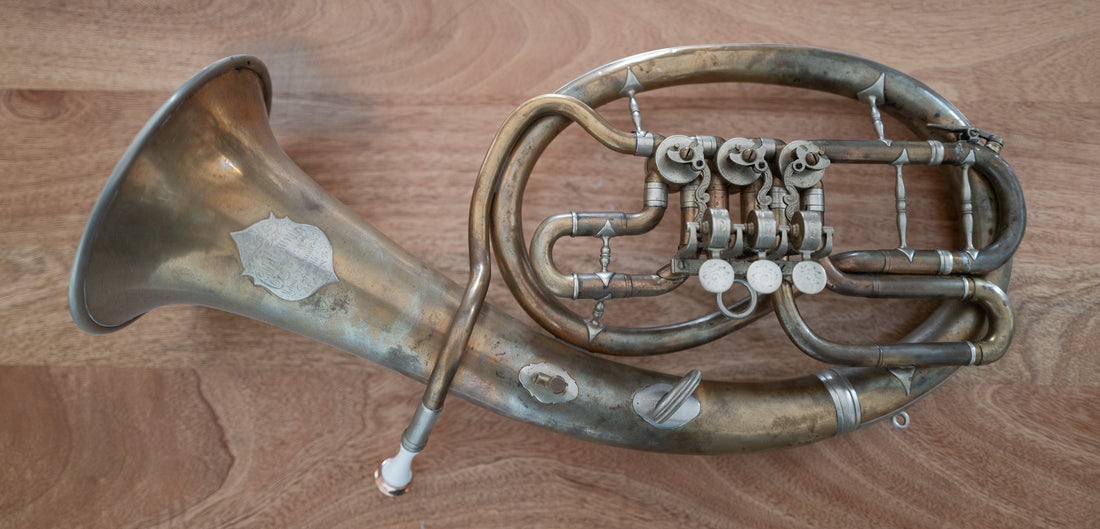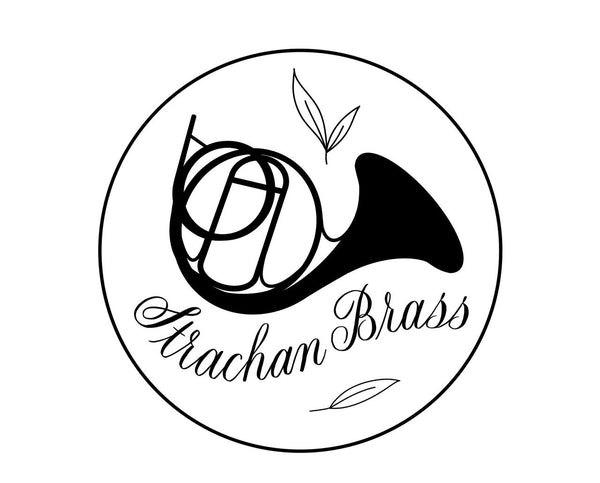Reviving an 1870s Alexander Alto Horn
Share
I've had this wonderful Alexander Mainz alto from the 1870s for a few years now. It's:
- Beautiful
- Got clockwork rotor springs which are *awesome*
- Got an absolutely bizarre receiver shank
I played it for a time with a Dennis Wicks #4 Alto mouthpiece on a sleeve to adapt to the huge shank receiver, but it never played all that well. The low range was woofy, the 1&3 valve combo was somehow devastatingly flat (?!) and it just wasn't very responsive.
I wrote this off as probably just poor valve compression and it would never play right unless it got a rebuild which was very low on my priorities list. So it hung on its hook on the wall for a while, neglected & ignored.
When my daughter was born, suddenly the wall it was hanging on was part of the nursery and I was forced to confront the object of my neglect.
So - off to CAD we go; lets make a mouthpiece for this thing. This is also to give a bit of a window into the process we go through when you order a custom cup (https://strachan-brass.com/products/customized-mouthpiece-cup)
The first step is carefully measuring the shank "choke" and taper. This lets us set the insertion depth & shank angle for a successful fit.
In this case, the shank chokes at a hair over 12mm and we want 25mm of insertion because the receiver is rather long. These dimensions aren't far off from a small-bore tenor trombone shank so you might think "oh why not use a trombone mouthpiece?". Well I had thought that too but it plays horrendously with one, even though the shank fits pretty well. Really flat in all registers, very narrow octaves and poor response.
So - given that it needs clearly a much smaller cup than a trombone. We also need a smaller cup than the Wicks because that too has poor response - we need some more efficiency than the #8 throat was providing and something is up with the harmonics of it.
We also have a clue here from the family of instruments these derive from - it's a bit closer to the trumpet family than our trombone shank or even modern Alto / Tenor mouthpieces might suggest.

Lets start with a pretty shallow cup then with a moderately tight #20 bore - somewhere in "bass trumpet" range but lets keep it a bit more "funnel-y" than a trumpet piece. And as a wild guess, lets try a 47mm prominence length.
Add a few variations in and off to the printer they go:
(You can watch it work here: https://youtu.be/_dd_fj8kIMw)
After printing, all we need to do is clean up the threads with a die and give the shank a light sanding to smooth it out and we're ready to test!
First batch the shank wasn't quite perfect - it sat 5mm too deep, so I added .3mm to the choke dimension for the next round. Despite this it played absolutely great - the instrument was, light, agile, efficient and alive.
After some measuring, it turns out that the printer was .2mm under design size on the shank so adding the compensation in for that on to round 2. The high octave was also a bit sharp so I added a little prominence to narrow the octaves out.


And here it is! 150 year old alto horn back in playing shape. Response is great, octaves are even & it makes an in-tune chromatic scale. Great success.
From here the design gets sent off to the machine shop & I'll receive the machined part in 3 weeks. After that, it needs some time in the tumbler to smooth out the finish and the custom mouthpiece is complete.

